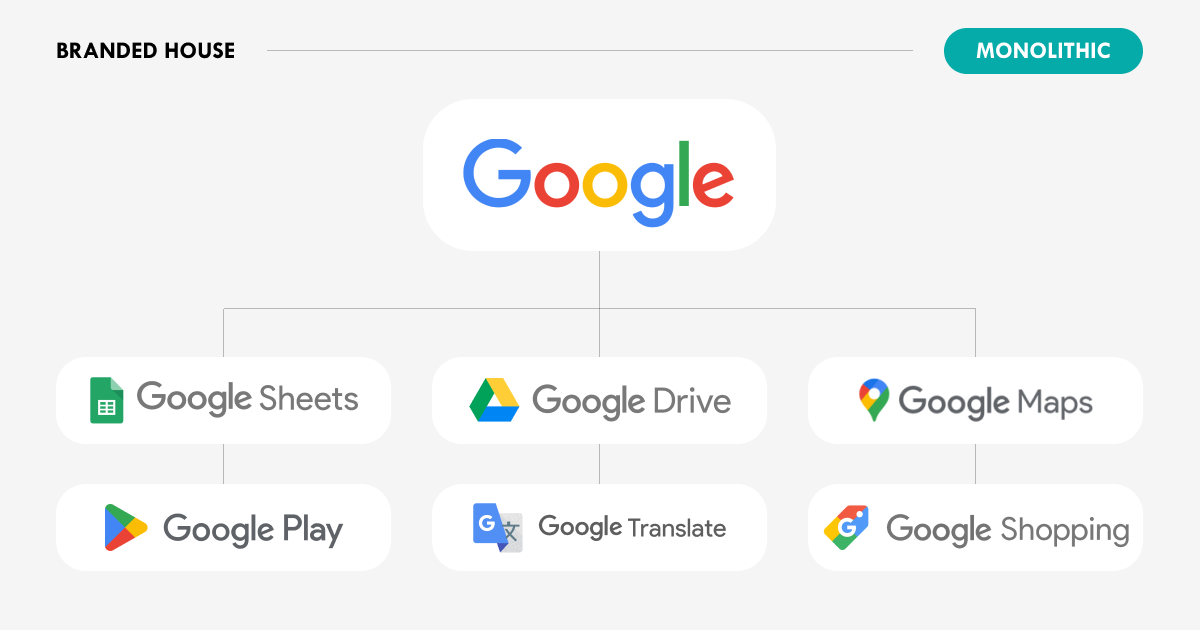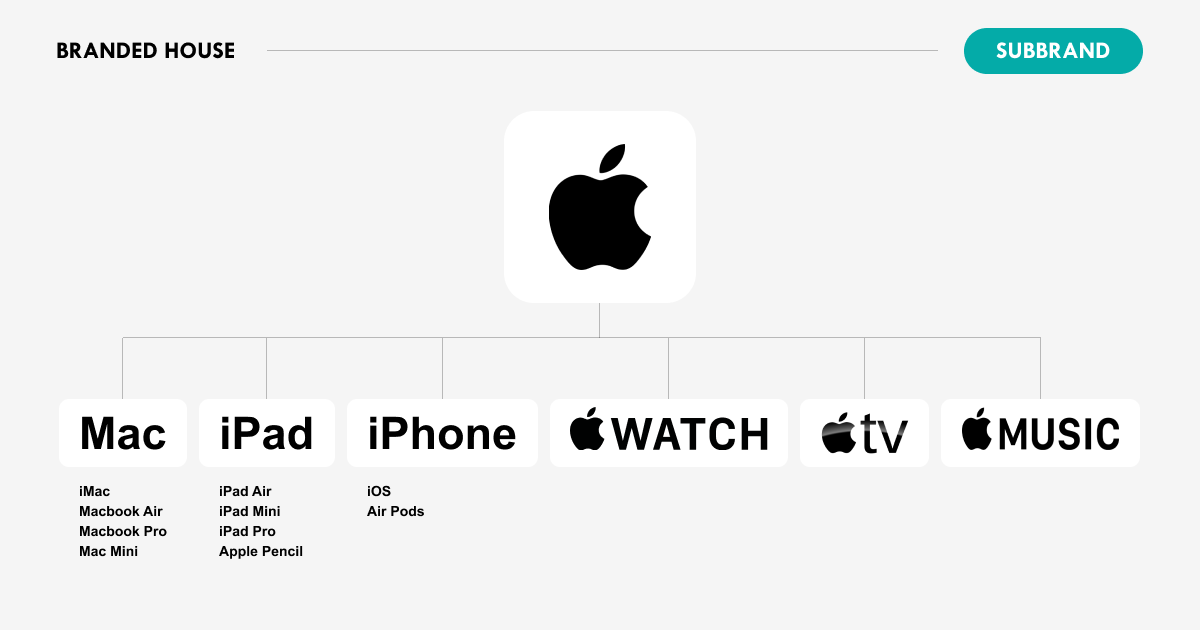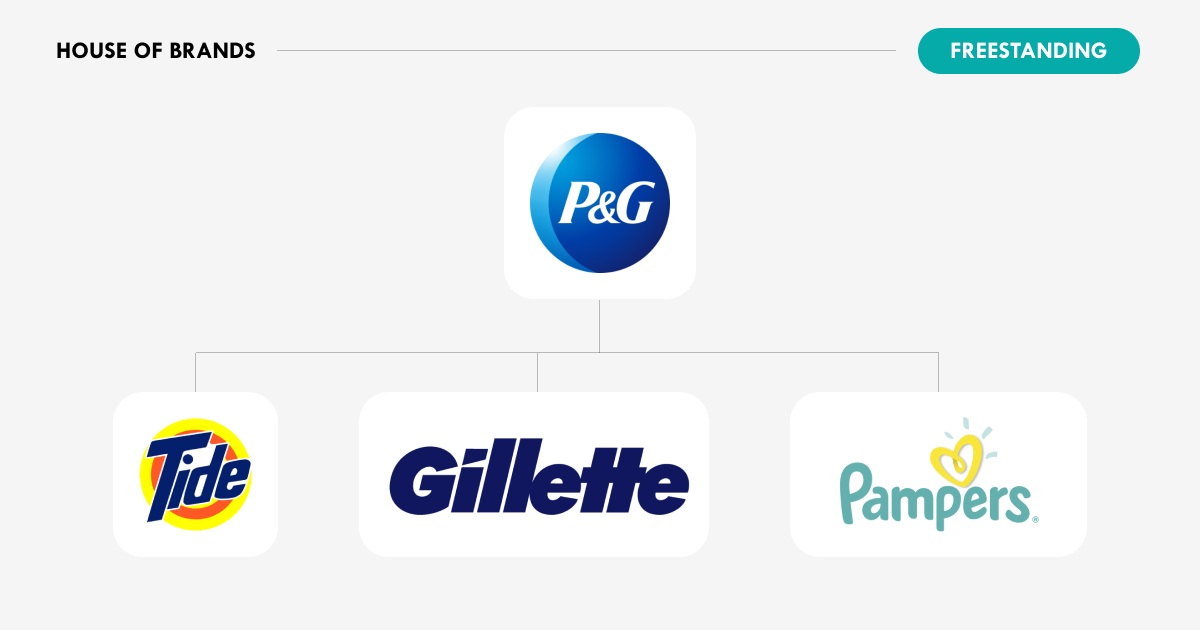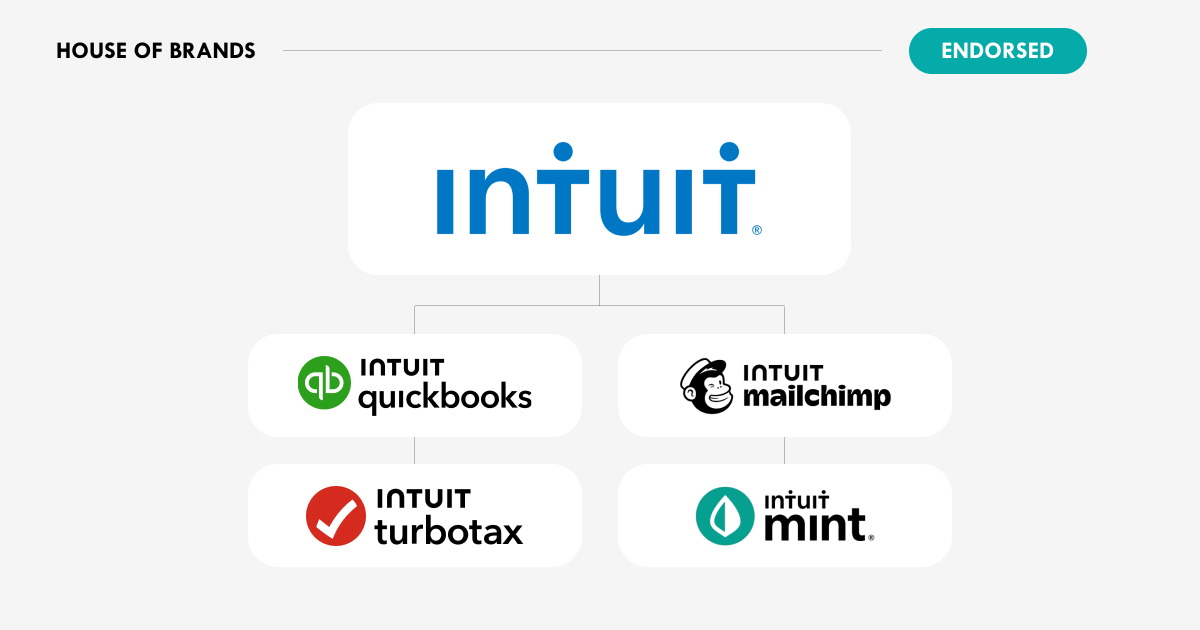
This blog was inspired by a LinkedIn post from Bill Kenney of Focus Lab. He is a phenomenal resource to anyone looking to level up their brand game.
When it comes to building a cohesive and effective brand strategy, the framework you choose can significantly impact your organization’s ability to communicate, differentiate, and scale. Brand frameworks serve as the architecture of your brand ecosystem, influencing how customers perceive individual products or services and your brand. Two primary frameworks dominate the landscape: the Branded House and the House of Brands. Within these categories are four distinct subtypes, each with unique advantages and challenges. Let’s explore these structures and highlight real-world examples to help you decide which framework might work best for your organization.
Brand Framework 1: Branded House – Centralized Brand Power
A Branded House framework unifies all offerings under a single, overarching brand identity. This structure creates a consistent experience and simplifies marketing efforts but requires careful management to ensure all products align with the core brand promise.

a. Monolithic Structure
The Monolithic structure represents the most cohesive approach, where all products and services are presented under one brand name. Examples include Google, which uses its master brand for products like Google Maps, Google Drive, and Google Calendar.
Positives:
- Unified Identity: A single brand name builds cumulative equity across all offerings, making it easier to achieve recognition and trust.
- Efficiency: Marketing and operational efforts benefit from economies of scale.
- Customer Loyalty: A strong central brand fosters deep customer connections.
Negatives:
- Reputational Risk: A failure in one product can negatively affect the entire brand.
- Limited Flexibility: It’s harder to target niche markets without creating separate identities.

b. Subbrand Structure
In a Subbrand structure, the parent brand remains prominent while creating individual identities for specific offerings. Apple exemplifies this approach with products like the iPhone, iPad, and Apple Watch. Each subbrand benefits from the Apple name while allowing room for product-specific differentiation.
Positives:
- Balance of Consistency and Flexibility: Subbrands leverage the parent’s credibility while tailoring messaging to distinct audiences.
- Scalability: New subbrands can be introduced without diluting the core brand.
Negatives:
- Complexity: Managing multiple subbrands requires additional resources and strategic alignment.
- Dilution Risk: If subbrands stray too far from the parent’s identity, the overall brand can weaken.
Brand Framework 2: House of Brands – Diverse and Independent
A House of Brands framework prioritizes independence among individual brands within a single organization. This structure is often used by companies with diverse product lines or target audiences, allowing maximum flexibility and market penetration.

c. Freestanding Structure
In a Freestanding structure, brands operate independently without overt association with the parent company. Procter & Gamble (P&G) exemplifies this with brands like Tide, Gillette, and Pampers, each marketed as a standalone entity.
Positives:
- Market-Specific Appeal: Brands can be tailored to highly specific audiences or markets.
- Risk Isolation: Issues with one brand are unlikely to impact others within the portfolio.
Negatives:
- High Costs: Managing multiple brands requires significant investment in marketing and resources.
- Fragmented Equity: Brand equity is distributed across individual entities rather than consolidated.

d. Endorsed Structure
The Endorsed structure provides a middle ground by linking independent brands to a parent company through subtle associations. Intuit takes this approach with its subbrands Mint, TurboTax, Quickbooks, and Mailchimp. Each has its own identity but benefits from the credibility of the parent.
Positives:
- Credibility Boost: The endorsement from a respected parent brand builds trust.
- Flexibility: Brands can maintain distinct identities while benefiting from shared equity.
Negatives:
- Association Risks: Negative experiences with one brand can affect the parent’s reputation.
- Strategic Tension: Balancing independence with endorsement can create operational challenges.
Which Framework is Right for You?
Choosing the right brand framework depends on your organization’s goals, market positioning, and resources. A Branded House works well for companies aiming to create a unified customer experience and capitalize on brand equity. Meanwhile, a House of Brands offers flexibility and risk mitigation for organizations with diverse or unrelated product lines.
By understanding the nuances of each framework and its subtypes, you can craft a branding strategy that supports your growth and resonates with your audience. Whether you’re scaling up or redefining your identity, the right framework will lay the foundation for sustainable success.
The Rising Need for Brand Architecture Work
In today’s fast-paced and competitive marketplace, the demand for strategic brand architecture work has never been greater. Organizations are expanding into new markets, launching diverse product lines, and navigating digital transformation—all of which create complexity within their brand ecosystems. Without a clear framework, businesses risk diluting their brand equity, confusing customers, and missing growth opportunities.
Brand architecture work helps organizations:
- Clarify Roles: Define the relationship between parent brands, subbrands, and independent brands to create a cohesive narrative.
- Adapt to Change: Ensure that new acquisitions, product launches, or market shifts align with the overarching brand strategy.
- Maximize Impact: Optimize resources by aligning marketing efforts and strengthening brand loyalty across all touchpoints.
As businesses continue to innovate and diversify, investing in thoughtful brand architecture is essential for sustaining relevance, trust, and competitive advantage in an increasingly crowded landscape.
Share this post on your social profile:
With more than a decade of agency and in-house experience, Ben is a seasoned veteran of the marketing world and leads YMC’s marketing strategy efforts. From project management to brand marketing, Ben’s depth of experience has helped him develop a well-rounded and detail-oriented approach to solving even the most complex marketing and brand challenges. Most recently, Ben served as the Director of Brand Operations & Strategy for Bonterra – the world’s second largest and fastest growing social good technology company.
Want to get our blogs directly to your inbox?
Enter your email to sign up for our point of view on marketing trends, brand strategy, and sustainable business.


